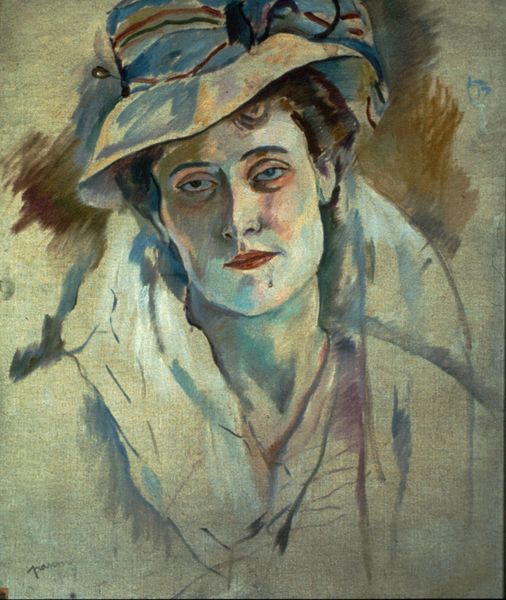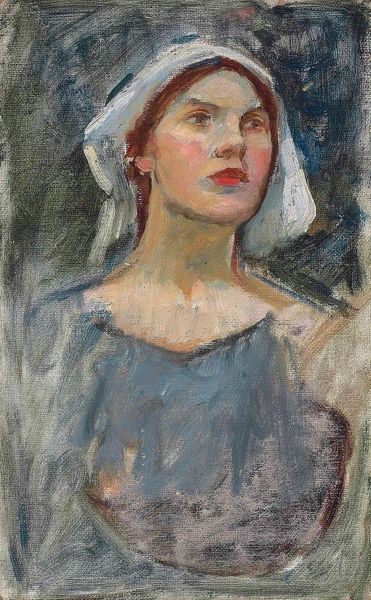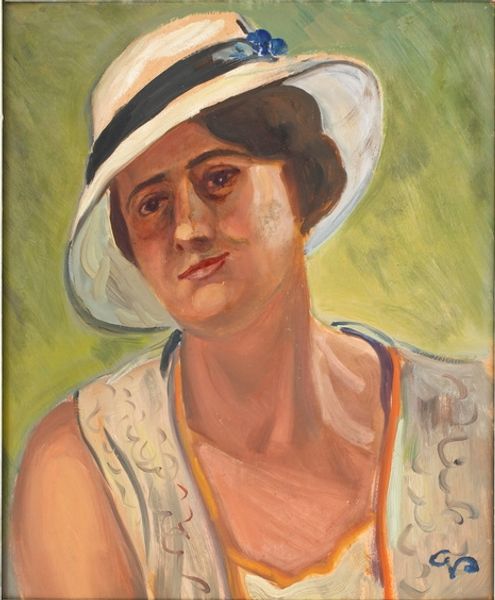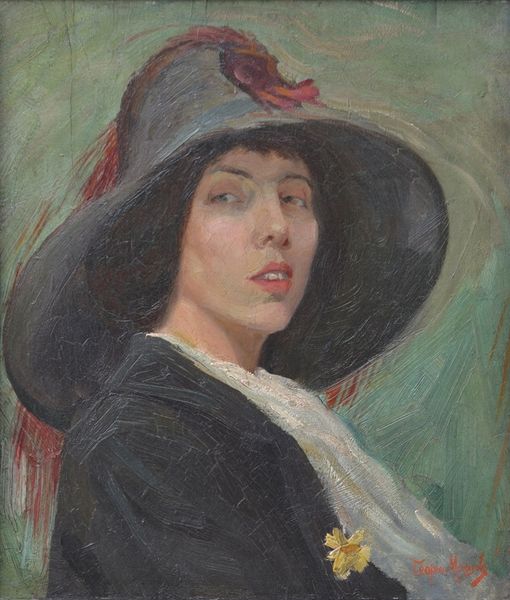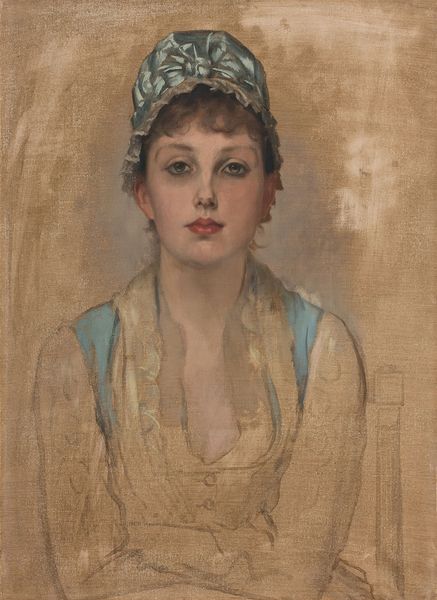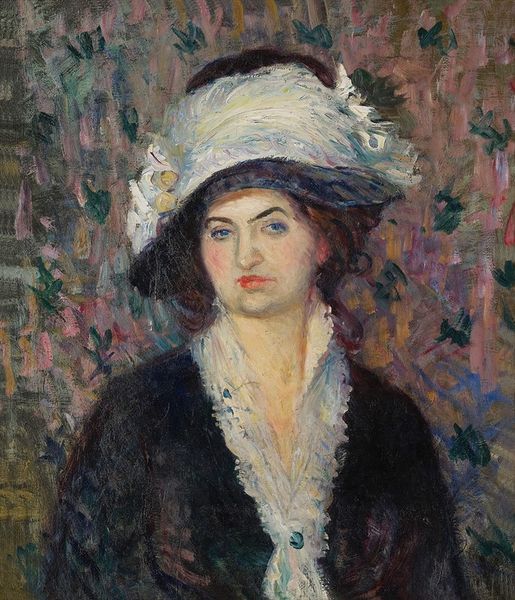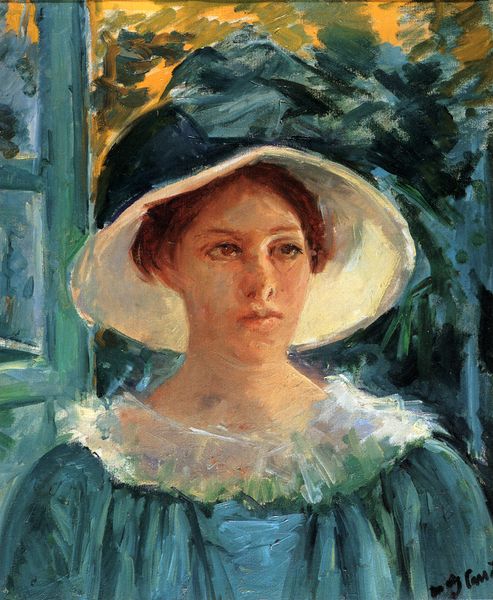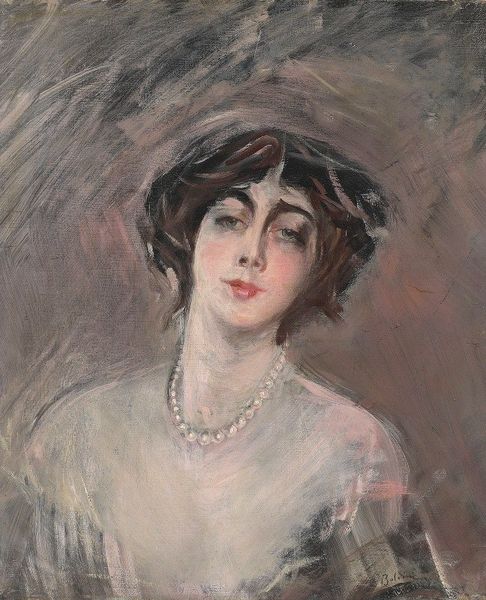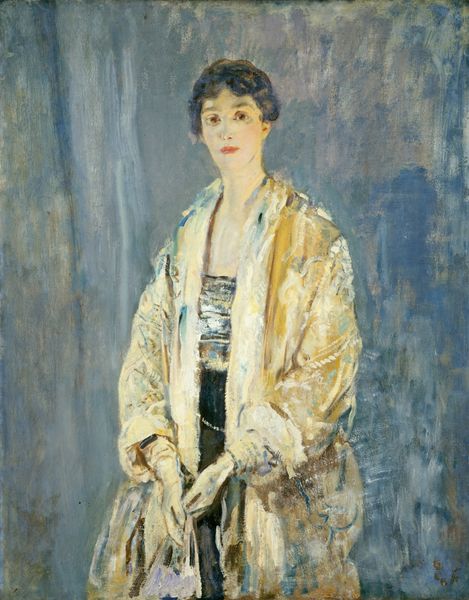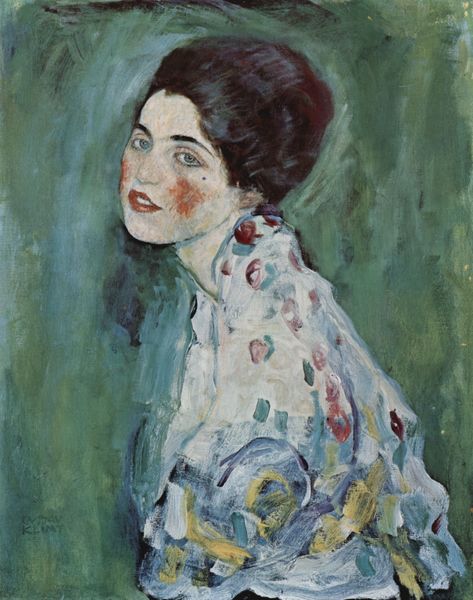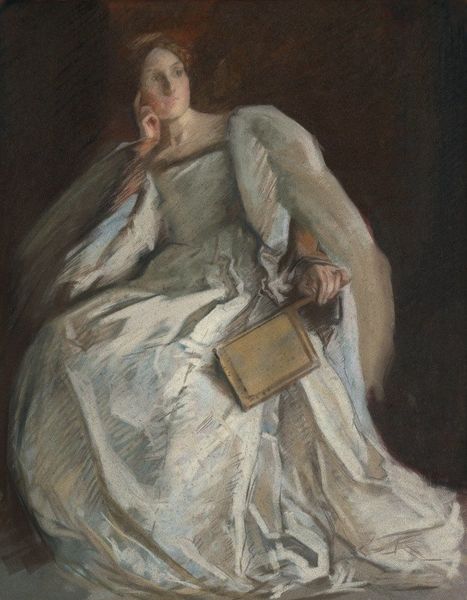
oil-paint
#
portrait
#
oil-paint
#
oil painting
#
portrait art
Copyright: Public domain
Curator: Before us hangs Fujishima Takeji's "Black Fan," an oil on canvas created in 1909. What strikes you upon viewing this work? Editor: Immediately, I am drawn to the somewhat unsettling dichotomy between the ethereal lightness of the woman’s white garb and the stark, almost foreboding black fan she holds. There's a distinct coolness to her gaze as well. Curator: Interesting. If we analyze the composition, notice how the artist employs loose brushstrokes, characteristic of Impressionism. The veil, rendered with broad strokes of white, frames her face, directing our gaze. The fan, acting almost as a shield, bisects the composition creating two unequal shapes. Editor: Absolutely, that fan really speaks to me. In many cultures, fans are symbols of feminine power, used for flirtation, concealment, even as weapons. This black fan, however, feels more like a symbol of mourning or perhaps even secrets. It cloaks, it doesn’t reveal. The adoption of such symbolism in the Japonisme movement, particularly during the Meiji era in Japan, points to Japan's complex engagement with Western culture as well. Curator: Indeed. The flattened perspective and simplified forms clearly nod to the aesthetics found within the ukiyo-e tradition, which itself gained tremendous traction with Western audiences, particularly the Impressionists. Fujishima strategically used these visual strategies to explore East/West exchange. The very texture of the impasto adds depth and movement. Editor: There's a quiet intensity. She could be a widow in mourning, or perhaps a courtesan aware of her power. Also, I cannot ignore how European that "veil" appears. It resembles, a nun's habit as much as a lace hood. Perhaps, the adoption of white veils is reflective of the global influence that Christian cultural practices exert across the planet. Curator: What you have astutely noticed adds complexity to its reception, as cultural references intertwine to establish Fujishima's unique stylistic construction. It prompts deeper questions. Editor: A beautiful meditation on cultural assimilation and artistic adaptation through material objects. Curator: Precisely. I find it fascinating to trace how Fujishima's formal choices result in an alluring depiction.
Comments
No comments
Be the first to comment and join the conversation on the ultimate creative platform.
